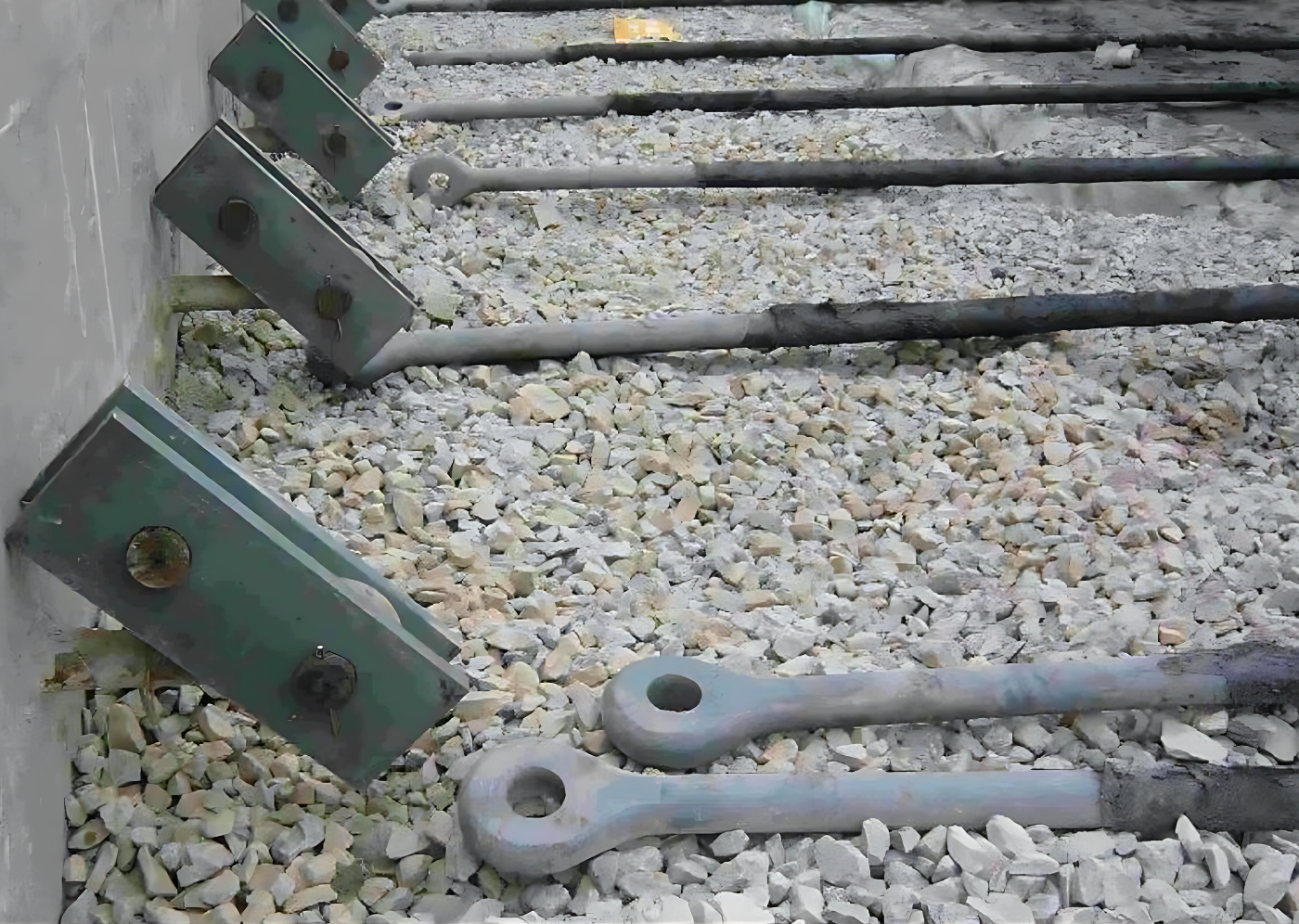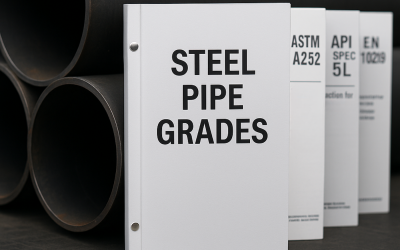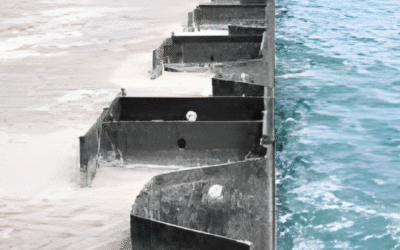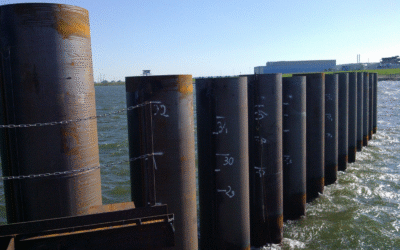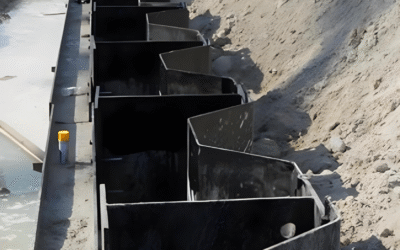Introduction: Why Retaining Walls Need Reliable Anchors
Retaining walls are critical for stabilising slopes, basement excavations, riverbanks, and waterfronts. But without well-designed retaining wall anchors, these structures can shift, crack, or even fail over time. Anchors and tie rods help resist lateral soil pressure, support poor ground conditions, and prevent further damage, especially in cases of wall bulging or structural cracking.
Types of Retaining Wall Anchors
A well-chosen anchor system ensures the retaining wall remains safe and cost-effective. The main solutions used in modern construction include:
Deadman Anchors:
A buried concrete block is inserted behind the wall to provide passive resistance. The tie rod is connected to the deadman, stabilising the wall.
Anchor Blocks:
These precast or cast-in-place concrete blocks are used for smaller walls and confined sites. The surrounding soil is compacted to increase passive resistance and holding capacity.
Ground Anchors, Earth Anchors and Tieback Anchors:
These anchors are drilled into stable ground or rock and bonded in place with cement grout or resin. Some systems use a polyester sock around the anchor for a stronger chemical bond with the soil. Tieback anchors are especially effective for stabilising slopes and deep basement excavations.
Guyed Structures
For some temporary works or lightweight retaining walls, guy wires or guyed tieback structures can provide additional support, especially when used in conjunction with other anchoring methods.
Soil Nails vs Anchors
Soil nails work similarly to earth anchors but are passive and typically grouted into place. They are used to stabilise slopes or walls with damaged masonry, preventing further movement and preserving the original appearance.

Design Principles: Embedment Depth, Anchor Capacity and Soil Conditions
Designing reliable retaining wall anchors requires a complete understanding of site conditions and load demands.
Embedment Depth and Length: Ground anchors or tieback anchors must be inserted deep enough into stable strata to develop a strong bond and resist pull-out. For grouted anchors, the bonded length is the portion embedded in stable soil or rock that transfers load through friction and interlock, while the free length allows for tensioning without load loss. For earth anchors or chemical resin anchors, the curing time must be considered to ensure the full strength of the bond is achieved before the system is fully loaded.
Anchor Capacity and Load Path: Engineers calculate the required anchor capacity based on wall height, soil pressure, and any surcharge loads from vehicles or adjacent structures. The design must ensure the anchors and tie rods are correctly aligned to transfer loads directly, avoiding bending stresses or eccentric loading that could reduce capacity.
Soil Conditions and Chemical Bond: Ground anchors develop resistance through both mechanical friction and, in some systems, a chemical bond with the surrounding soil or rock. For resin or self-drilling anchors, the chemical bond within a polyester sock enhances the connection in loose or granular soils. Sites with poor drainage or high water tables may require robust waterproofing and wall drainage measures to maintain soil shear strength and protect the bond zone.
Wall Drainage: Retaining wall drainage is crucial to prevent hydrostatic pressure buildup behind the wall. Proper wall drainage includes well-positioned weep holes, geotextiles, and perforated drainage pipes to manage water flow and protect the anchor system from softening soils and reduced capacity.

Installation Sequence: How to Construct a Stable Anchored Wall
A typical installation sequence for retaining wall anchors includes:
Excavation and Placement
- Excavate to the planned embedment depth.
- Insert deadman blocks or drill boreholes for ground anchors.
Tie Rod Assembly
- Connect tie rods or threaded rods to anchor plates or ground anchors.
- Install hex nuts and washers to ensure a tight connection.
- Tension the system progressively using hydraulic jacks.
Grouting and Curing
- For earth anchors and tieback anchors, the anchor is bonded with cement grout or resin. The curing time must be sufficient to reach the designed holding capacity.

Waterproofing, Retaining Wall Drainage & Further Protection
Retaining Wall Drainage: Installing wall drainage systems, such as weep holes, perforated pipes, and filter fabrics, reduces hydrostatic pressure. Poor drainage is a major cause of wall bulging, cracking, or the need for later wall repairs.
Waterproofing Coatings: Applying bitumen or epoxy coatings protects steel tie rods and anchoring hardware against corrosion, critical for marine projects or sites with high groundwater levels.
Additional Support: Anchors are often used in conjunction with other reinforcement methods, such as soil nails or micropiles, for stabilising slopes and damaged masonry.

Maintenance, Monitoring, and Repair
Regular inspection is essential to detect potential failures and extend service life.
- Visual Checks: Look for signs of corrosion, misalignment, or broken components.
- Tension Checks: Confirm that anchors maintain their designed tension with the proper equipment. Hydraulic jacks or load cells may be used for periodic testing.
- Wall Repair: When anchors loosen or fail, prompt wall repair and re-tensioning help prevent further damage and maintain the structure’s original appearance.

Example Applications: Where Retaining Wall Anchors Are Utilised
- Ports and Quay Walls: Tie rods, ground anchors, and deadman blocks stabilise quay walls and sheet pile walls exposed to dynamic loads.
- Urban Basement Excavations: Tieback anchors and earth anchors provide cost-effective temporary or permanent support for deep cuts.
- Slopes and Embankments: Soil nails and retaining wall anchors stabilise slopes and prevent landslides.
- Historic Structures: For stabilising damaged masonry, anchors and grout injections can be used to strengthen walls discreetly.
Conclusion
Modern retaining wall anchors — including deadman anchors, earth anchors, ground anchors, and tieback anchors — provide a highly effective way to stabilise retaining walls in demanding conditions. With the right design assistance, embedment, waterproofing, and drainage, these systems maintain structural integrity and prevent costly failures.
Related Products from Aema Steel
- Steel Tie Rod Systems
- Hot Rolled U Type Sheet Piles
- Hot Rolled Z Type Sheet Piles
- Steel Pipe Piles
- Welded H Piles
Contact us today to receive a tailored offer for your upcoming project.

